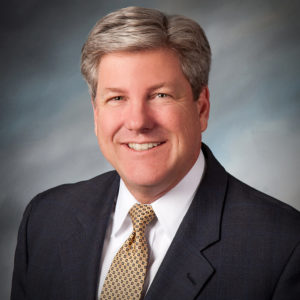This article originally appeared in Advisor Perspectives.
Janet Yellen, President-elect Biden’s nominee for Secretary of the Treasury, caught Wall Street by surprise in 2018. As the Fed chair, she set an asset cap on Wells Fargo and demonstrated an intolerance for abusive conduct.
Yellen checks many boxes – her scholarship, prior government experience and reputation in Washington.
The eminent publication, The Economist says, “No economist is more qualified than Ms. Yellen.”
The new administration is a month from taking office. Yet, the former Fed Chair’s “lockdown” of Wells Fargo, and the subsequent Office of the Comptroller of Currency’s (OCC) consent orders, have already demonstrated what protecting investors looks like.
Yellen’s farewell address at the Fed on February 2, 2018, offered a hint of what may come in financial investor protection in the new administration. In a 6:15 p. m. press release, just hours before she departed office, the Fed set out penalties for Wells Fargo.
“Responding to widespread consumer abuses and compliance breakdowns by Wells Fargo,” the Fed announced the asset cap and the replacement of three directors by April. “The Board required each current director to sign the cease and desist order.”
Yellen stated, “We cannot tolerate pervasive and persistent misconduct at any bank and the consumers harmed by Wells Fargo expect that robust and comprehensive reforms will be put in place to make certain the abuses do not occur again.”
For context, regulatory responsibility for Wells Fargo is shared between the Federal Reserve, FDIC and the OCC for safety and soundness. The primary prudential regulator of the bank subsidiary is the OCC.
On January 22 this year the OCC followed the former Fed Chair’s action with consent orders for six Wells Fargo executives. This included its former CEO, John Stumpf, who was fined $17.5 million.
The consent orders deservedly received wide attention. They were unusual, as the Wall Street Journal noted, “Few top bank executives have faced penalties of this scale in recent years.”
Yet scant attention was paid to what former CEO Stumpf oversaw: what Wells Fargo employees, management and executives did to make the “fake accounts scandal” happen.
But the OCC paid close attention. The consent order abandoned legalese and explained in plain language the 14-year record of “systemic sales practices misconduct” in detail.
The OCC answered four basic questions.
What is sales practice misconduct?
It is employees “issuing products or services” without customer consent, or transferring customer funds from one account to another without customer consent. Also, it includes “obtaining the customer’s consent by making a false or deceptive statement.” From Dec 2013 to Sept 2015 at least 5,000 customers complained alleging lack of consent.
When did these illegal practices occur?
From at least 2002 until October 2016.
Why?
“There was a ‘culture’ in the Community Bank that resulted in systemic violations of laws and regulations, breaches of fiduciary duties, and unsafe or unsound practices by large numbers of bank employees.”
How?
“The root cause of the systemic sales practices misconduct” was the imposition of “unreasonable” sales goals and “pressure to meet the goals”.
The OCC produced a 100-page report documenting evidence in data and statements of how the bank “caused hundreds of thousands” of employees to engage in illegal or unethical behavior. The personal statements of employees and managers are hair-raising. Here are just a few.
In October 2016, one former member of the bank operating committee likened the culture problem as failing to distinguish right from wrong: “Our people opened unauthorized accounts. This is like lying and stealing, which your mother taught you was really bad.”
Another employee wrote to the CEOs office in in 2013, “I was in the 1991 Gulf War … and I had less stress in war than working for Wells Fargo.”
“Employees fear of being terminated for not meeting unreasonable sales goals was justified,” the OCC stated. Between 2011 and 2016 the bank terminated some 8520 employees for sales performance issues.
In 2010, an employee complained to a bank executive that reaching sales numbers, “will force the staff to cheat,” and that, “The noose around our neck has tightened (and) this type of practice guarantees high turnover, a managerial staff of bullying taskmasters, (and) bankers who are really financial molesters and cheaters.”
In 2009 a corporate manager wrote, “we have heard for years,” that sales pressure is the cause of illegal or unethical practices. “A standard line we hear is ‘I can play by the rules and get fired for not making unrealistic goals or I can cheat and hope I don’t get caught.’”
Employee turnover was high – the OCC estimated 35% annually.
While regulators have different responsibilities and regimes, comparing two regulators’ approaches is be fruitful.
The SEC took a different approach to Wells Fargo – an approach it often takes: disclosure. Disclosure has too often become the go-to solution for the SEC in addressing conflicts of interest. This became especially clear in the first term of the Obama administration.
In the SEC’s share-class initiative, it rightly ruled against dual registrants who failed to recommend less costly identical shares, calling it insufficient disclosure. Failures have largely been deemed disclosure lapses, instead of fiduciary or execution errors.
This is wrong. Labeling a decision to recommend a more costly identical share should be, on its face, a serious fiduciary breach. Labeling it a disclosure failure understates the seriousness of the breach of fiduciary duty.
The SEC’s charges in Wells Fargo were about misleading investors. The SEC alleged Wells Fargo misled investors with inaccurate data as part of its cross-selling “needs-based” strategy and its blind drive to see the bank succeed. Bank executives championed accounts illegally or unethically issued.
This is wrong and misleading. The larger point is whether charges of disclosure failures and misleading investors sufficiently captures the illegal or unethical conduct that requires action. Too often disclosure failures obscure larger failures.
Yellen’s Wells Fargo edict was historic. The OCC’s subsequent consent orders were revealing. The sheer magnitude of Wells Fargo illegal conduct that the OCC has shown as occurring for over 14 years is hard to fathom.
The media has come to call the Wells Fargo fiasco the “fake accounts scandal,” which gets 196 million Google hits as a search term. The problem is that Washington has diluted the meaning of “fake” and “scandal.” A more relevant label, in light of OCC’s investigations, is “illegal-accounts program.”

